3.7 Die Körpergröße und Haarlänge

Hallo alle zusammen!
Zum Aufwärmen machen wir unseren Tagesminiplausch und eine Wiederholung.
Wiederholung
In the previous lesson you learned more body parts and how to count using the plural forms of body parts. Let’s review.
Jetzt bist du dran!
Wie viele Finger hast du? Wie viele Zehen? How many fingers do you have? How many toes? Go through the previous activity again and write down each sentence in your journal, describing your own body.
Lektionsüberblick
In the end, you will be able to talk about 1) someone’s height (and other big and small body parts), 2) the length of their hair (and other long and short body parts) and, 3) compare height, size, and length of body parts. Feel free to lachen (laugh) a little at that! 😉
Was weißt du schon?
Check your existing skills with the activity below.
| Noch nicht start klar?
Du kannst immer auf die gleiche 1010-Lektion zurückgreifen! |
Not confident about starting this lesson?
You can always review the same Lektion from 1010. |
1) Groß oder klein
When describing our physical appearance, it’s helpful to be able to express how tall we are. German speakers say their Körpergröße (height) in centimeters. This is important because even if you correctly state your height in feet and inches, this is not easily understood by Germans.
Using a feet to centimeter conversion calculator, how tall are you in centimeters? If you would like to learn how to say this number in German, you can check out this video.
We can also describe Körpergröße more generally.

Der Mann ist klein.
Die Frau ist groß.
Was ist noch groß oder klein? (What else can be big or small?) Augen, Ohren, Nase, Mund, Füße, und Hände! Let’s practice. Be sure to click through to each question.
Jetzt bist du dran!
Ich bin 169cm groß, also mittelgroß. Ich habe große Augen, mittelgroße Ohren, kleine Füße und kleine Hände. Ich habe eine mittelgroße Nase und einen mittelgroßen Mund.
Märchen im Blickpunkt: Rotkäppchen
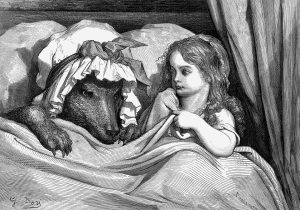 Do you remember a Märchenfigur (Fairy tale figure) with large body parts? Read the exchange between Rotkäppchen (Little Red Riding Hood) and the Wolf:
Do you remember a Märchenfigur (Fairy tale figure) with large body parts? Read the exchange between Rotkäppchen (Little Red Riding Hood) and the Wolf:
| „Ei, Großmutter, was hast du für große Ohren!“
„Daß ich dich besser hören kann.“ „Ei, Großmutter, was hast du für große Augen!“ „Daß ich dich besser sehen kann.“ „Ei, Großmutter, was hast du für große Hände!“ „Daß ich dich besser packen kann.“ „Aber, Großmutter, was hast du für ein entsetzlich großes Maul!“ „Daß ich dich besser fressen kann.“ |
“O grandmother, what large ears you have got!”
“The better to hear with.” “O grandmother, what great eyes you have got!” “The better to see with.” “O grandmother, what large hands you have got!” “The better to take hold of you with.” “But, grandmother, what a terrible large mouth you have got!” “The better to devour you!” |
2) Lang oder kurz
Klein, mittelgroß, und groß are used for height. So how do we describe the length of hair, arms, legs, fingers, nails, etc.? Let’s look at descriptions of the following people.
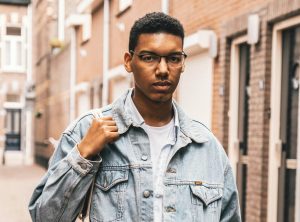 |
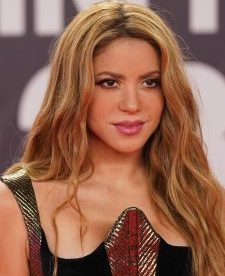 |
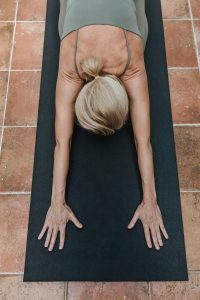 |
| Er hat kurze Haare. | Sie hat lange Haare. | Xier hat lange Arme. |
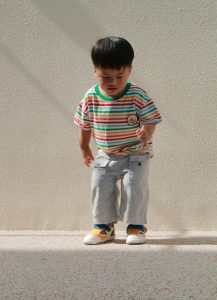 |
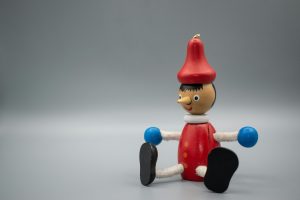 |
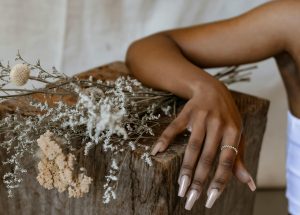 |
| Das Kind hat kurze Beine. | Die Puppe hat eine lange Nase. | Die Person hat lange Nägel. |
Now let’s practice using kurz und lang. Be sure to click through each question in the question set below.
Jetzt bist du dran!
Ich habe lange Haare. Ich habe lange Beine. Ich habe kurze Finger und kurze Nägel. (You can see that she does not name everything, because you really only comment on the length of anything (except for hair), if it is unusually short or long.)
3) Körperteile vergleichen
Look at the pictures below and read the descriptions. Can you tell what comparisons are being made?
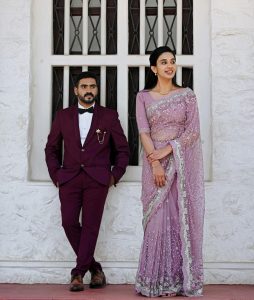 |
 |
| Die Frau ist größer als der Mann. | Die linke Person ist kleiner als die rechte Person. |
| Der Mann ist kleiner als die Frau. | Die rechte Person ist größer als die linke Person. |
 |
 |
| Er hat kürzere Haare als sie. | Sie hat längere Haare als er. |
| Seine Haare sind kürzer als ihre Haare. | Ihre Haare sind länger als seine Haare. |
 |
 |
| Xier hat längere Arme als das Kind. | Das Kind hat kürzere Beine als xier. |
| Xiere Arme sind länger als seine Arme. | Seine Beine sind kürzer als xiere Beine. |
 |
 |
| Die Puppe hat eine längere Nase als der Mann. | Er hat eine kürzere Nase als die Puppe. |
| Ihre Nase ist länger als seine Nase. | Seine Nase ist kürzer als ihre Nase. |
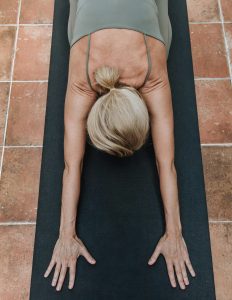 |
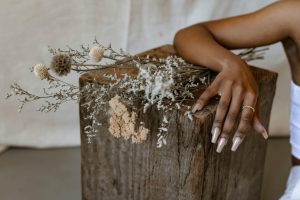 |
| Xier hat kürzere Nägel als sie. | Sie hat längere Nägel als xier. |
| Xiere Nägel sind kürzer als ihre Nägel. | Ihre Nägel sind kürzer als xiere Nägel. |
Österreich im Blickpunkt: Die Linzer Torte, Kultur und Essen
 Die Linzer Torte ist ein traditionelles österreiches Gebäck mit drei Schichten: Teig, Obst-Nuss-Masse, und oben ein Gitter. Sie zählt für Österreich zu den Traditionellen Lebensmitteln, d.h. sie wird als Kulturgut anerkannt.
Die Linzer Torte ist ein traditionelles österreiches Gebäck mit drei Schichten: Teig, Obst-Nuss-Masse, und oben ein Gitter. Sie zählt für Österreich zu den Traditionellen Lebensmitteln, d.h. sie wird als Kulturgut anerkannt.
Der bayerische Komponist Ludwig Schmidseder schrieb eine Operette mit dem Titel „Linzer Torte“, uraufgeführt 1944 im Landestheater Linz.
The Linzer Torte is a traditional Austrian pastry with three layers: a form of shortbread, a fruit-nut-mixture, and a lattice on top. In Austria, the Linzer Torte belongs to the so-called “traditional foods”, which means that it is recognized as a cultural good.
The Bavarian composer, Ludwig Schidseder, wrote an Operette called “Linzer Torte” that premiered at the Linz State Theater in 1944.
Zum Schluß

*As you conclude this lesson, don’t forget to check Canvas!*

Media Attributions
- Rotkäppchen text by Gebrüder Grimm from Wikisource, public domain.
- Little Red Cap text by Gebrüder Grimm, translated by Lucy Crane from Wikisource, public domain.
- Linzer Torte text adapted from Wikipedia, licensed under a CC BY-A 4.0 International license.
- Register der Traditionellen Lebensmittel text adapted from Wikipedia, licensed under a CC BY-A 4.0 International license.
Media Attributions
- 1020-at-banner-large-1
- Photo of long nails by pexels-pnw-prod-8377435
- Photo of couple by pexels-jinto-mathew-3071051-11146331
- Photo of woman doing yoga by pexels-ron-lach-10223018
- Private:

